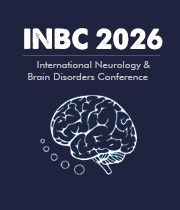Congenital Myopathies
Congenital myopathies are a rare group of genetic neuromuscular diseases that are present at birth. In most cases, the cause is unknown. Symptoms typically include muscle weakness, stiffness, and joint contractures, as well as hypotonia, which can cause developmental delays. Other common features may include scoliosis, respiratory problems, swallowing difficulties, and cardiac issues. Diagnosis is often challenging as there are currently no laboratory tests or tools that can pinpoint congenital myopathies. Diagnosis often requires a combination of examinations, including physical, neurological, and musculoskeletal evaluations, as well as electrodiagnostic tests, medical imaging, and a muscle biopsy. Treatment for congenital myopathies is focused on managing symptoms and improving quality of life. It may involve physical therapy, occupational therapy, assistive devices, medications, and surgery, depending on the individual’s needs. As there is no cure, treatment plans focus on management and prevention of further complications. Although often rare, congenital myopathies can be life-threatening. Early and accurate diagnosis is critical for providing the best care possible. Fortunately, research such as whole-exome sequencing is making it possible to diagnose these conditions faster and with more accuracy. With improved diagnosis and treatment options, the quality of life for people living with congenital myopathies is improving.

Joe Sam Robinson
Mercer University, United States
Robert B Slocum
University of Kentucky HealthCare, United States
George Diaz
Memorial Healthcare Systems, United States
Daniel Curry
Texas Children’s Hospital, United States
Zhenhuan Liu
Guangzhou University Chinese Medicine, China
Kiran Ghotra
Lake Erie College of Osteopathic Medicine, United States




Title : Atypical presentation of Juvenile myoclonic epilepsy in a 16-year-old female: A Case Report
George Diaz, Memorial Healthcare Systems, United States
Title : What we don’t know about hydrocephalus and It’s management
Daniel Curry, Texas Children’s Hospital, United States
Title : Artificial intelligence-driven DWI and FLAIR for the detection of early stroke changes: A systematic review
Shari L Guerra, The Medical City, Philippines
Title : Mapping neuroplasticity in occupational therapy: Evidence-based interventions with measurable neural outcomes
Jessica Marchant, Texas Woman's University, United States
Title : Non-pharmacologic management of orthostatic hypotension in inpatient rehabilitation: A quality improvement initiative
Laura Steakin, Rehabilitation Institute at Sinai, United States
Title : Non-pharmacologic management of orthostatic hypotension in inpatient rehabilitation: A quality improvement initiative
Mackenzie Weber, Rehabilitation Institute at Sinai, United States